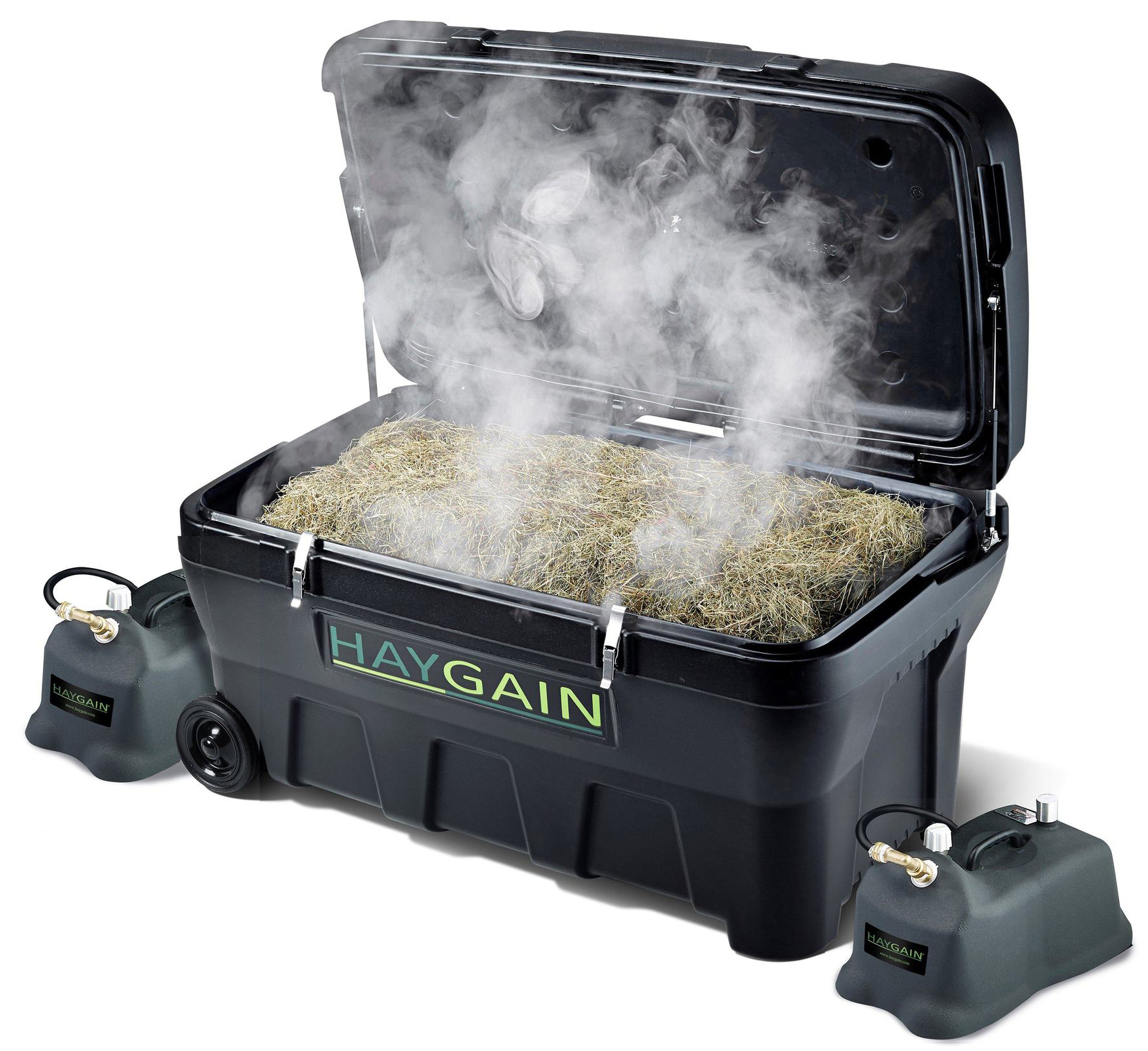
The forage a horse eats might be nutritional, but it can pose health problems, especially if high in non-structural carbohydrates (NSC) or laden with particulate debris and dust. NSCs are known to adversely affect horses with insulin dysfunction, pituitary pars intermedia dysfunction, and equine metabolic syndrome or obesity. Dusty hay has the potential to exacerbate respiratory conditions, such as equine asthma.
One strategy to help reduce both the amount of non-structural carbohydrates (NSC) in hay and particulate debris is to soak or steam the forage before feeding.
A Canadian study examined the nutrient value of timothy-alfalfa hay that was either soaked for 30 minutes in room-temperature water or steamed in a commercial hay steamer for an hour to temperatures of 165-185 degrees Fahrenheit during the last 10 minutes [Owens, T.; Barnes ,M.; Gargano, V.; et al. Nutrient content changes from steaming or soaking timothy-alfalfa hay: Effects of feed preferences and acute glycemic response in Standardbred racehorses. Journal of Animal Science, Aug 2019; doi: 10.1093/jas/skz252 ]
The objective was to determine which hay form was preferred as related to palatability, how much was consumed, and also to evaluate the horses’ glycemic responses. Both forms of wetted hay as well as dry hay were offered to 13 Standardbred racehorses actively in training to evaluate hay preference, and to nine Standardbred horses in training for the glycemic response study.
The horses were fasted for 10 hours prior to being offered hay, then allowed to eat for 30 minutes. As to hay preference: Less time was spent eating soaked hay compared to dry or steamed hay.
The glycemic response tests were performed on nine Standardbred horses in active race training. During the six hours after eating hay, blood glucose (but not insulin) was measured every 30 minutes. The results showed:
- Peak blood glucose, average blood glucose, and time to peak glucose showed no differences between treatments.
Other nutrients were also analyzed:
- There were lower concentrations of soluble protein (by 22%), NSC, and potassium in soaked hay compared to steamed hay.
- NSC levels were greater in hay that was soaked overnight for 10 hours compared to hay that was soaked for only 30 minutes.
- Soaked hay had 32% more calcium with no change in phosphorus, resulting in an elevated calcium to phosphorus ratio.
- Potassium levels decreased by 41% in the 30-minute soaked hay.
- Soaked hay had a relative doubling of sodium whereas steamed and dry hay did not.
- Steamed hay did not experience these mineral changes, and in fact, had increased potassium and no change in sodium.
Loss of nutrients—protein, NSC and potassium—with soaking might influence decisions on whether to use this method relative to athletic demands of an individual horse that depends on adequate protein and electrolyte levels for optimum performance. In fact, more digestible protein is available when feeding steamed hay. The horses preferred the palatability of steamed and dry hay over hay that was soaked.
In conclusion, this study recommends that steaming hay better maximizes nutrient intake and palatability compared to soaking, while also mitigating particulate matter that could irritate airways.








